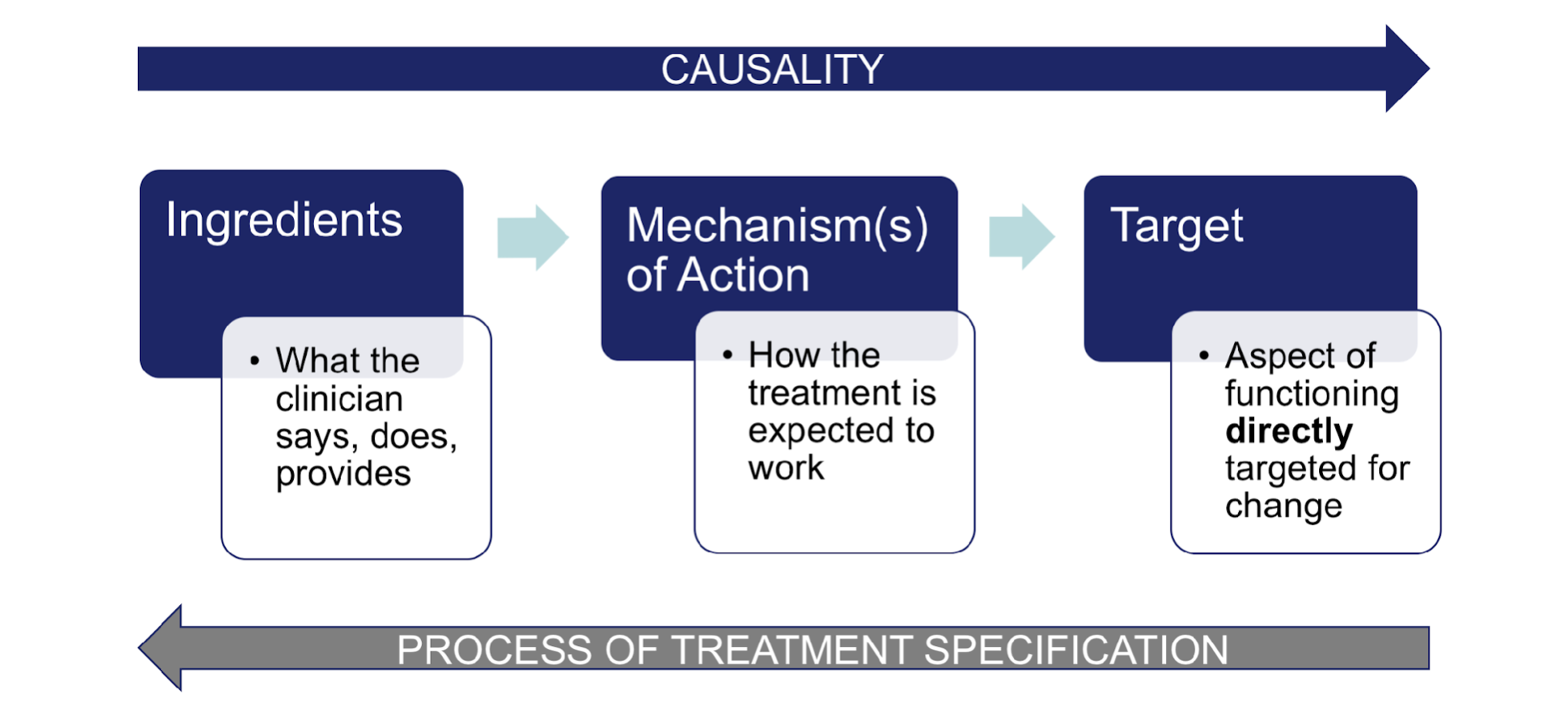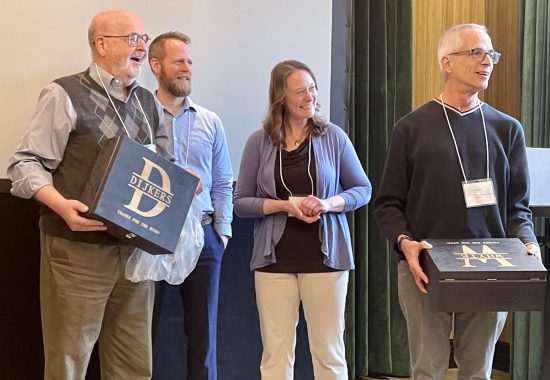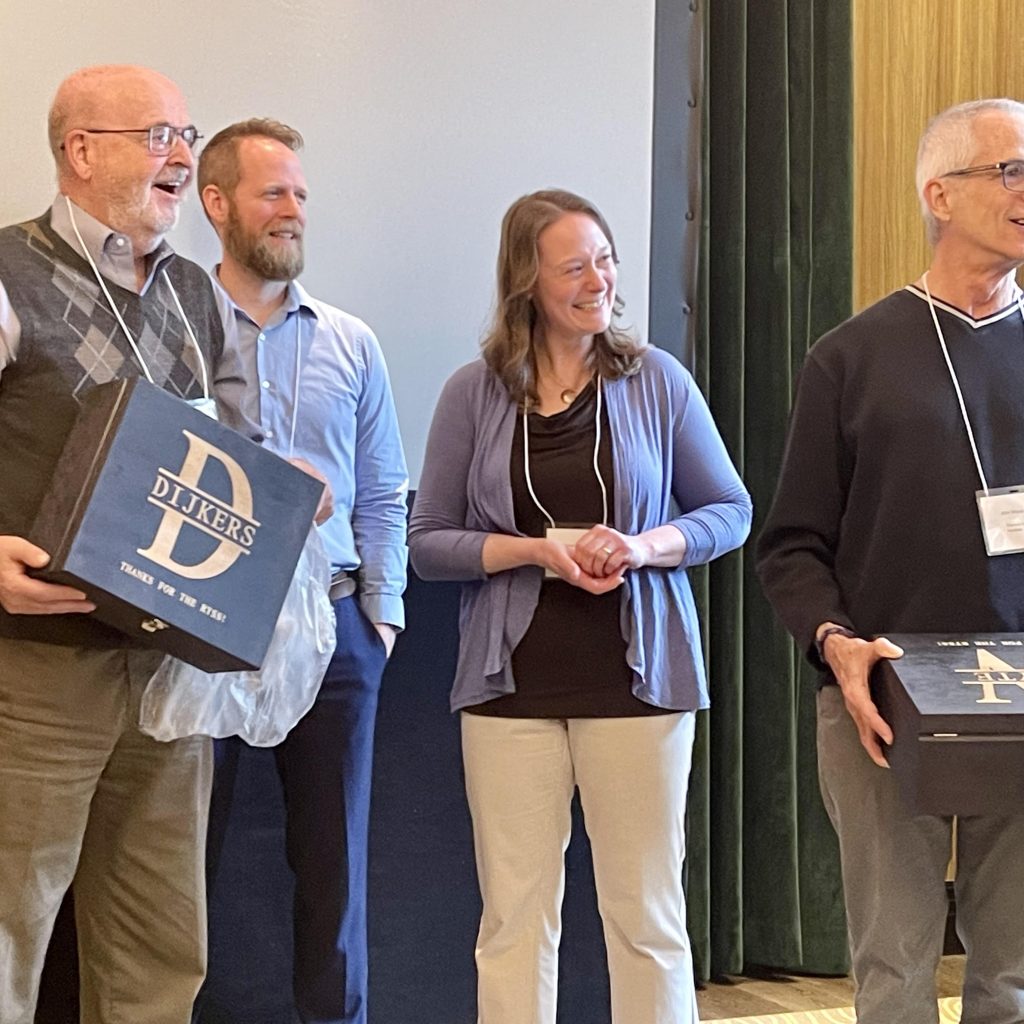 Treatment theory, in which active ingredients influence a functional target through a proposed mechanism of action, forms the foundation for the RTSS.
Treatment theory, in which active ingredients influence a functional target through a proposed mechanism of action, forms the foundation for the RTSS.
The Rehabilitation Treatment Specification System (RTSS) has been under development for more than 15 years to address one of the most fundamental obstacles to progress in rehabilitation research: the “black box” problem related to our treatments. Whereas drugs are named and categorized in terms of their active ingredients, the vast majority of rehabilitation treatments involve systematic exposure to various kinds of experiences, delivered through interactions with a clinician. The active ingredients of such treatments are not self-evident, so we resort to naming them according to the facility (“3 weeks of inpatient rehabilitation”), discipline (“3 hours/week of physical therapy”), or the problem addressed (“a course of cognitive rehabilitation”). This makes it difficult to replicate research on effective treatments, to know whether two treatments differ in important ways, or to implement successful treatments in the clinic.
Principal investigators of the funded projects that led to the development of the RTSS (Marcel Dijkers, NIDIlRR; John Whyte, PCOR), were recognized with personalized “black boxes” signifying the problem that the RTSS aims to “unpack”.
The RTSS provides a standardized framework for describing all rehabilitation interventions with respect to their known or hypothesized active ingredients, based on an explicit treatment theory. This ensures that the label for the treatment is matched to the active ingredients that it contains, and that dissemination of the treatment will mean dissemination of those ingredients. It also means that clinical trials are much more than empirical comparisons of two treatments. They are tests of an underlying treatment theory, and their results help advance rehabilitation science.
Since the publication of the Manual for Rehabilitation Treatment Specification in 2019 and the organization of the Rehabilitation Treatment Specification Networking Group (RTS-NG) at the American Congress of Rehabilitation (ACRM), the manual has been downloaded by over 1,400 individuals worldwide and been the subject of numerous publications in diverse areas of rehabilitation. Nevertheless, individuals seeking to use the RTSS to guide research design, education, or clinical practice have found some of the implementation tasks to be challenging, despite recognizing the value of the underlying concepts. While the concepts embodied by the RTSS are useful to individual researchers and clinicians once they are understood, other benefits of the RTSS can only be realized with broader implementation so that it becomes a shared communication system. For example, the ability to aggregate research and conduct meaningful meta-analyses requires that the contributing studies report their results in RTSS-compatible ways.
A number of recent activities by members of the RTS-NG have helped explore ways to improve specific practices in rehabilitation, by implementing RTSS-based concepts. Jeanne Zanca, MPT, PhD, at Kessler Rehabilitation Institute, received an engagement contract from the Patient-Centered Outcomes Research Institute (PCORI) to understand barriers and facilitators to researchers’ application of RTSS-related concepts in research reporting, and the barriers and facilitators to clinician’s’ application of published research evidence. These stakeholder discussions provided insight into the targeted education and support materials that would help researchers apply RTSS principles to design and report their research. However, clinicians felt that treatments that were clearly reported along these lines would be feasible to implement by clinicians without requiring their intensive exposure to the RTSS directly.
In April, Moss Rehabilitation Research Institute (MRRI) sponsored and hosted a “RTSS Superusers Summit” to bring together researchers, educators, and clinicians from North America and Europe who have had the most experience in concrete projects involving the RTSS. The invited workshop was attended by 44 individuals from a range of rehabilitation disciplines. The workshop aimed to address two broad goals: to help these “early adopters” address challenges that they faced in their own RTSS-related work; and for RTSS developers to get feedback on the types of centralized infrastructure and support that might be needed to advance further implementation efforts. Questions and challenges faced by participants were surveyed in advance and shaped the contents of the meeting agenda. Cross-cutting questions related to the level of granularity that is optimal for treatment specification and the process needed for arriving at consensus labels for targets and ingredients were central discussion topics. As a result of the workshop, a number of new task forces were formed or reorganized within the RTS-NG, and plans were developed to apply for an ambitious infrastructure grant to support further implementation efforts.

Participants at the SuperUsers Summit engage in discussion.
This last goal was successfully met with the submission of an application for a P50 rehabilitation research infrastructure grant from the National Institutes of Health, led by Jarrad Van Stan, PhD, CCC-SLP, at Harvard as principal investigator. The proposal includes a Resource Core at MRRI, led by John Whyte, MD, PhD, and a Community Engagement and Outreach Core, at the Massachusetts General Hospital Institute for Health Professions, led by Kathleen Lyons, ScD, OTR/L. Should this grant be funded, it would support research on the impact of RTSS consultation on the quality of published research reporting, and on a generalizable method for arriving at standard menus of targets and ingredients in specific treatment domains. Moreover, the grant would provide resources to expand the pool of RTSS experts who can consult to researchers, educators, and clinicians about their implementation efforts. Regardless of the outcome of this specific grant application, the collaborative network of investigators will undoubtedly continue to move forward with implementation efforts.
This fall, at the annual meeting of the ACRM (10/31/24 – 11/3/24, Dallas) the RTS-NG will again offer a full schedule of symposia related to the RTSS. This will include a focus on its use by specific disciplines, its use for specific purposes, such as research design or clinical reasoning, as well as a symposium devoted to summarizing the work of the Superusers Summit, itself. Dr. Whyte will be among the presenters in two ACRM symposia on November 3rd. The first will discuss how the RTSS can be used to improve the experimental design and reporting for intervention studies, and the second will cover real-life challenges to using the RTSS. Reflecting on recent RTSS-related activities, Dr. Whyte remarked, “Widespread implementation of the RTSS has the potential to transform the field of rehabilitation to improve research and ensure patients receive the best possible care. It has been exciting to see the advances we have made over the years, and scientists at MRRI look forward to continuing to be involved in future developments.”


